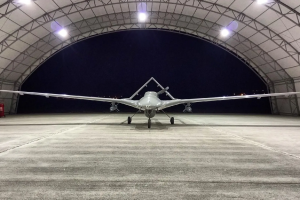The U.S. significantly bolstered its military presence in Syria between November 1 and 18 through extensive aerial and ground reinforcements, including cargo planes, helicopters, and convoys carrying weapons, logistics, and anti-aircraft systems.
Between November 1 and 18, the United States intensified its military operations in Syria by deploying over 138 vehicles and 16 cargo planes loaded with military and logistical supplies. These reinforcements included weapons, anti-aircraft systems, and personnel, delivered to key bases such as Harab Cir, Shaddadi, and Konico. Ground support also escalated, with large convoys crossing the al-Waleed border carrying equipment to U.S. bases in Hasakah and Deir ez-Zor. The operations were coordinated under heavy helicopter air cover, reflecting a robust response to heightened regional tensions.
The U.S.’s recent military activities in Syria demonstrate a clear commitment to maintaining strategic influence in the region, with extensive reinforcements indicating preparations for potential escalations or operational shifts in response to regional instability.
From November 1 to November 18, the United States carried out shipments to Syria involving over 138 vehicles (including military and logistics vehicles, trucks, and distribution units) and 16 cargo planes.
Aerial Operations:
- November 2: A cargo plane delivered military and logistical equipment to the Harab Cir base, along with supplies for personnel stationed there.
- November 3: Military and logistical reinforcements, including weapons, were flown to the Shaddadi base via a cargo plane.
- November 5: A cargo plane carrying military and logistical supplies landed at the Qasrak base on the way to Hasakah. During the operation, two helicopters escorted the flight, while another military helicopter arrived at the Shaddadi base.
- November 6: A U.S. cargo plane loaded with military and logistical equipment departed from Harab Cir base. Three additional cargo flights landed at the base, increasing the total to four within hours.
- November 7: A cargo plane carrying military equipment, including anti-aircraft missiles, landed at Harab Cir amid heavy helicopter activity.
- November 10: A cargo plane loaded with military and logistical supplies arrived at Harab Cir under the air cover of two helicopters patrolling the area.
- November 14: Two cargo planes delivered military and logistical reinforcements to the Shaddadi base. On the same day, another cargo plane landed at Harab Cir with anti-aircraft ammunition, coinciding with U.S. helicopter flights.
- November 17: The U.S. deployed additional military reinforcements to its base at the Konico gas field via cargo planes. These deliveries included military and logistical equipment under helicopter air cover. On the same day, another cargo plane carrying military supplies landed at Harab Cir during intense helicopter patrols.
- November 18: A military cargo plane carrying both military and helicopter-related equipment landed at the Shaddadi base in southern Hasakah.
Ground Reinforcements:
- November 2: New military reinforcements arrived in Syria through the al-Waleed border crossing. These included 30 trucks loaded with military and logistical supplies, closed containers, and fuel tankers heading to a U.S. base near Hasakah.
- November 4: International Coalition forces strengthened the Konico gas field base with reinforcements, including 15 heavily armed vehicles and bulldozers to support operations in tense areas.
- November 6: Coalition forces deployed 20 trucks loaded with military, logistical, and medical supplies, including weapons and air defense systems, from Harab Cir to the Qasrak base near the town of Tel Tamr, north of Hasakah.
- November 13: Additional reinforcements entered northern Syria through the al-Waleed border crossing. This convoy consisted of 50 trucks carrying military and logistical equipment, closed containers, and fuel tanks, heading towards U.S. bases in Deir ez-Zor and Hasakah.
- November 15: Another convoy of 13 trucks loaded with military and logistical supplies, closed containers, and fuel tanks crossed the al-Waleed border, heading to a U.S. base in rural Hasakah.
The recent surge in U.S. military activities in Syria highlights a deliberate effort to strengthen its strategic foothold in a volatile region. The deployment of extensive reinforcements, including advanced weaponry, logistical support, and anti-aircraft systems, suggests a heightened state of readiness and a potential response to evolving threats or geopolitical pressures. The combination of aerial and ground operations, coordinated with significant helicopter air cover, underscores the complexity and scale of the mission, reflecting broader objectives to secure key bases and maintain operational dominance amid escalating regional tensions.
These operations underscore sustained military and logistical support to U.S. and Coalition bases in Syria amid heightened regional tensions.






